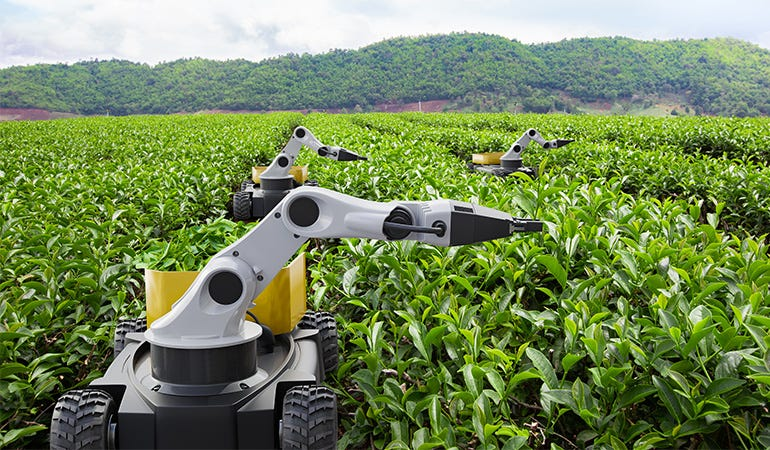African agriculture is on the cusp of a technological revolution, and robotics-based crop monitoring is at the forefront of this transformation. As the continent struggles to feed its rapidly growing population, innovative solutions are needed to increase crop yields, reduce waste, and promote sustainable farming practices. Robotics-based crop monitoring offers a promising answer to these challenges, leveraging cutting-edge technologies to optimize crop management and improve farming outcomes.
The State of African Agriculture
African agriculture faces numerous challenges, including climate change, soil degradation, and limited access to resources and technology. Smallholder farmers, who dominate the agricultural landscape, often lack the expertise, equipment, and infrastructure to optimize crop production. As a result, crop yields are often low, and food security remains a pressing concern.
The Emergence of Robotics-Based Crop Monitoring
Robotics-based crop monitoring involves the use of autonomous vehicles, drones, and sensors to collect data on crop health, growth, and development. This data is then analyzed using advanced algorithms and machine learning techniques to provide actionable insights to farmers. By leveraging robotics and artificial intelligence, farmers can:
- Monitor crop health: Identify early signs of disease, pests, and nutrient deficiencies, enabling targeted interventions and reducing the use of chemical pesticides and fertilizers.
- Optimize irrigation: Precise monitoring of soil moisture levels and crop water requirements ensures efficient water use, reducing waste and minimizing the environmental impact of farming.
- Predict yields: Advanced analytics and machine learning models enable farmers to predict crop yields, making informed decisions about harvesting, storage, and marketing.
- Improve crop management: Robotics-based crop monitoring provides valuable insights on crop growth patterns, enabling farmers to adjust farming practices, such as pruning, fertilization, and pest control.
Benefits of Robotics-Based Crop Monitoring in African Agriculture
The adoption of robotics-based crop monitoring in African agriculture offers numerous benefits, including:
- Increased crop yields: By optimizing crop management and reducing losses due to disease, pests, and environmental stress, farmers can increase crop yields and improve food security.
- Improved resource allocation: Robotics-based crop monitoring enables farmers to allocate resources more efficiently, reducing waste and minimizing the environmental impact of farming.
- Enhanced decision-making: Data-driven insights empower farmers to make informed decisions about farming practices, improving overall farm productivity and profitability.
- Increased competitiveness: By adopting cutting-edge technologies, African farmers can compete more effectively in local and global markets, improving their livelihoods and contributing to economic growth.
Case Studies: Robotics-Based Crop Monitoring in African Agriculture
Several initiatives are underway to promote robotics-based crop monitoring in African agriculture. For example:
- The African Robotics Network: A pan-African initiative aimed at promoting the development and adoption of robotics and artificial intelligence in agriculture.
- The Rwanda Agriculture Board: In partnership with the University of California, Berkeley, the Rwanda Agriculture Board is implementing a robotics-based crop monitoring system to improve crop yields and reduce losses.
- The South African Robotics and Automation Society: This organization is promoting the use of robotics and automation in various sectors, including agriculture, to improve productivity and competitiveness.
Challenges and Opportunities
While robotics-based crop monitoring holds great promise for African agriculture, several challenges need to be addressed, including:
- Infrastructure and connectivity: Limited access to reliable internet connectivity, electricity, and other infrastructure can hinder the adoption of robotics-based crop monitoring.
- Cost and affordability: The high cost of robotics and artificial intelligence technologies can be a barrier to adoption for smallholder farmers.
- Capacity building: Farmers and agricultural professionals require training and capacity building to effectively use and maintain robotics-based crop monitoring systems.
Despite these challenges, the opportunities presented by robotics-based crop monitoring in African agriculture are significant. As the technology continues to evolve and costs decline, it is likely that we will see widespread adoption across the continent.
Conclusion
Robotics-based crop monitoring is revolutionizing African agriculture, offering a promising solution to the challenges facing the sector. By leveraging cutting-edge technologies, farmers can optimize crop management, improve yields, and reduce waste. As the technology continues to evolve, it is essential to address the challenges and opportunities presented by robotics-based crop monitoring, ensuring that smallholder farmers can access and benefit from these innovations. The future of African agriculture is bright, and robotics-based crop monitoring is at the forefront of this transformation.

